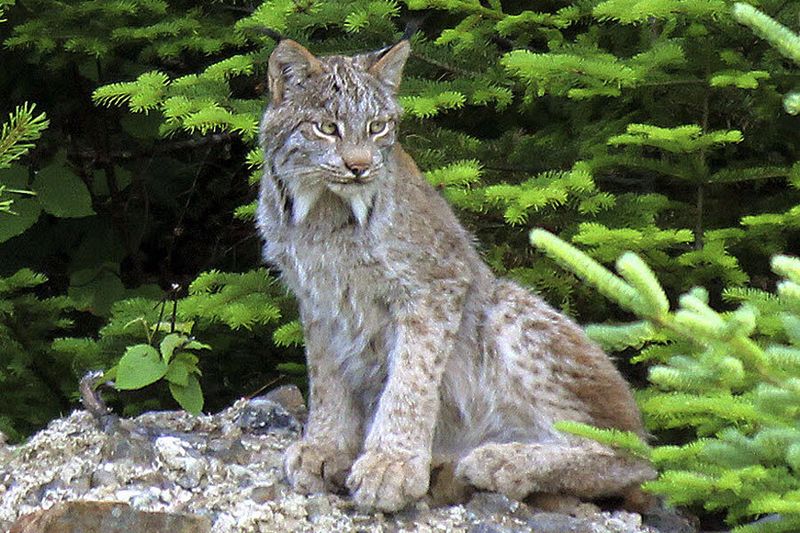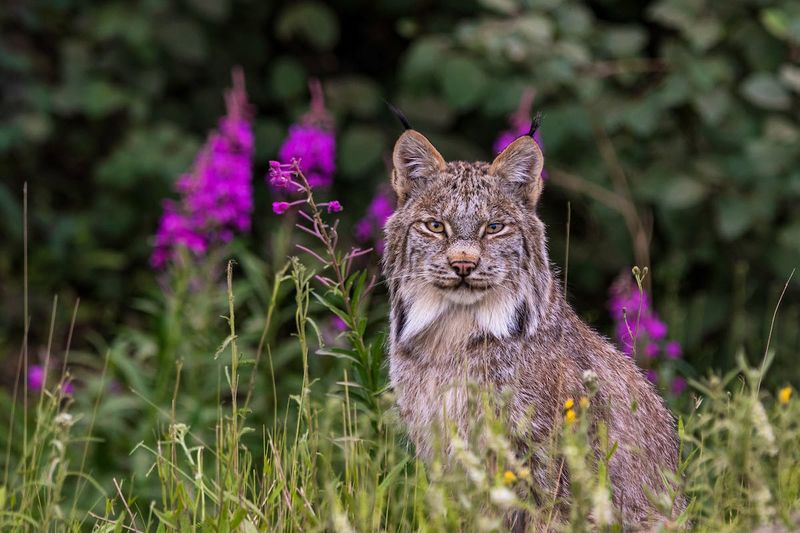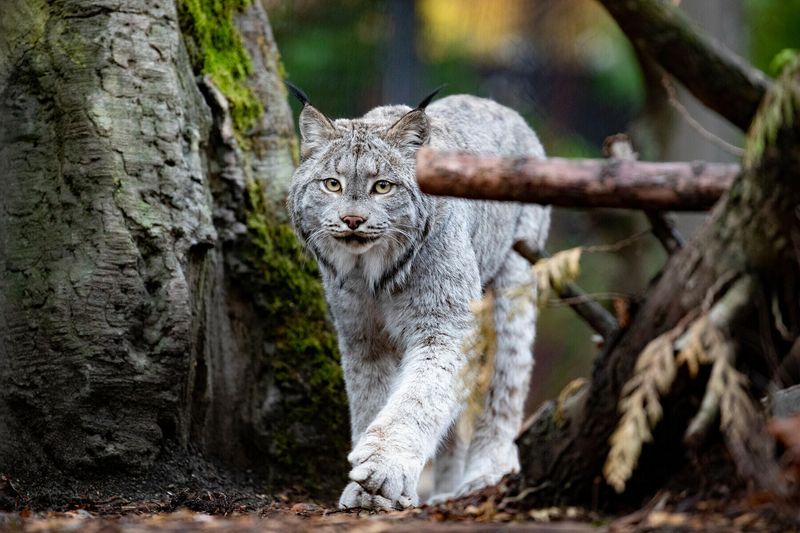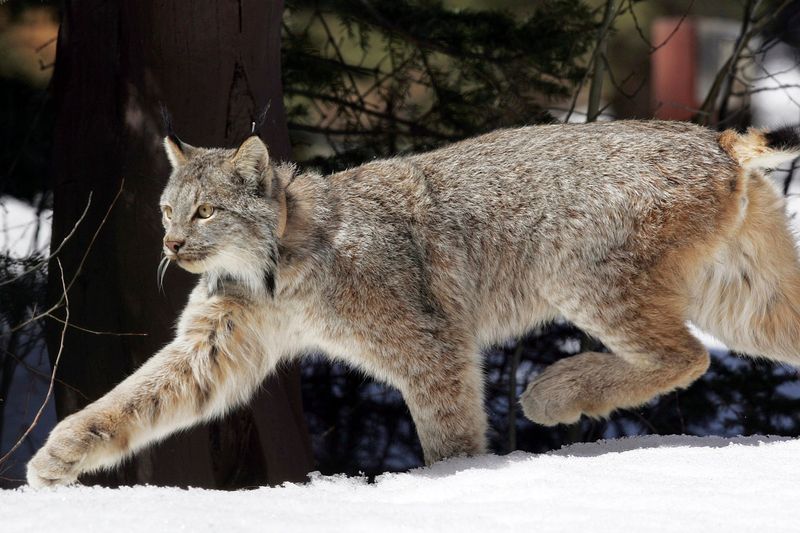📖 Table of Content:
Elusive and ghostlike, the Canada lynx (Lynx canadensis) roams silently through some of the most remote and inhospitable forests in North America. With oversized, snowshoe-like paws and an exquisite winter coat, these wildcats are perfectly adapted for survival in snowbound habitats. Yet, despite their resilience, lynx populations in the contiguous United States have dwindled due to shrinking habitat, climate change, and human encroachment.
Once widespread, these animals now occupy a fraction of their historic range, pushing biologists and conservationists to intensify efforts to track, study, and preserve them. Advances in remote tracking and field surveys have helped uncover scattered populations hanging on in hidden corners of the country. These remaining strongholds are vital not just for the lynx, but for the ecosystems they inhabit—systems that rely on apex predators to maintain balance.
While the lynx continues to evade easy sightings, there are places where the species still thrives—often silently and almost invisibly. From the boreal forests of Maine to the subalpine slopes of the Rockies, these wildcats endure in landscapes both harsh and breathtaking. Here are five regions in the United States where the Canada lynx quietly persists against the odds.
1. Northeastern Maine
Forests regenerating after timber harvests in northeastern Maine have become unexpected sanctuaries for Canada lynx. This region now boasts the largest lynx population in the Lower 48, with estimates hovering around 1,000 individuals—a stark contrast to the fewer than 200 recorded in the 1990s. These young, mixed forests offer ideal cover and an abundance of snowshoe hares, the lynx’s preferred prey. Unlike other states where development fragments habitats, Maine’s North Woods remain vast and sparsely populated, allowing natural cycles to flourish. Scientists attribute the population increase not only to prey availability but also to state-managed conservation practices that protect breeding grounds. Seasonal snowpack in this region gives lynx an edge over competitors like bobcats, who struggle in deep snow. As long as forest management continues to support early successional habitats, the lynx’s future in Maine remains promising.
2. Northern Minnesota
Across northern Minnesota, dense boreal woods and remote wetlands provide critical habitat for lynx navigating the southern edge of their range. Wildlife biologists have intensified tracking efforts in recent years, deploying GPS collars and camera traps to map lynx movement with unprecedented accuracy. These studies have revealed surprising patterns, including seasonal migrations and long-distance dispersals, painting a more complex picture of lynx behavior than previously understood. The lynx here must contend with both natural and human challenges, from changing snowfall patterns to increasing competition with bobcats moving northward. Despite these pressures, evidence suggests the population remains stable, albeit small and highly elusive. Conservation groups and research institutions, such as the University of Minnesota Duluth’s Natural Resources Research Institute, play a pivotal role in monitoring and protecting this species. Continued research and habitat protection may help ensure lynx endure in this often-overlooked wilderness.
3. Northern Rockies – Montana & Idaho
Carved by glaciers and crowned with subalpine forests, the Northern Rockies of Montana and Idaho offer a classic lynx refuge. Here, steep terrain and heavy snowfall deter most human activity, creating natural sanctuaries ideal for this cold-adapted species. Federal wildlife officials have recently expanded habitat protections in this region, acknowledging it as one of the few landscapes with long-term viability for lynx conservation. While sightings remain rare, consistent reports from backcountry trappers, hikers, and wildlife cameras suggest the animals are resident, not just passing through. Critical to their survival is the preservation of continuous forest corridors that connect high-elevation habitats and facilitate genetic exchange. Fire suppression, logging, and recreational use all pose threats, making strategic land management essential. The resilience of the lynx in these rugged mountains is a testament to nature’s persistence, but also a reminder of our responsibility to protect it.
4. North Cascades, Washington
Tucked into the northeastern reaches of Washington, the North Cascades shelter one of the last breeding populations of lynx in the Pacific Northwest. Unlike the more robust populations of Maine or the Rockies, this one is fragile—fewer than 50 individuals are believed to remain. These cats cling to survival in fragmented high-elevation forests, navigating a patchwork of protected land, logging zones, and fire-scorched areas. The state’s wildlife agency has launched initiatives aimed at habitat restoration and potential reintroductions to bolster their numbers. Unfortunately, increasing wildfire intensity has significantly reduced the availability of suitable lynx habitat in recent years. Cross-border collaboration with Canada has become vital, as lynx regularly traverse international boundaries in search of food and mates. With intensive management and ecological foresight, there is still hope for a resurgence in this wild, glaciated range.
5. Southern Rockies – Colorado
High in the Southern Rockies of Colorado, a once-absent predator has made an extraordinary return. After being extirpated for decades, the Canada lynx was reintroduced here in 1999 through a bold recovery program involving the release of over 200 individuals. These pioneers not only survived but established territories and bred successfully, turning what many considered an experiment into a conservation triumph. Today, a stable population roams the San Juan and Sawatch ranges, aided by relatively cool climates and abundant prey. While initial challenges included high kitten mortality and dispersal failure, adaptation over time has improved survival rates. Biologists now view Colorado as a lynx stronghold likely to persist under current climate models, at least longer than other southern populations. The Colorado reintroduction stands as one of the most successful examples of large carnivore recovery in the United States.




